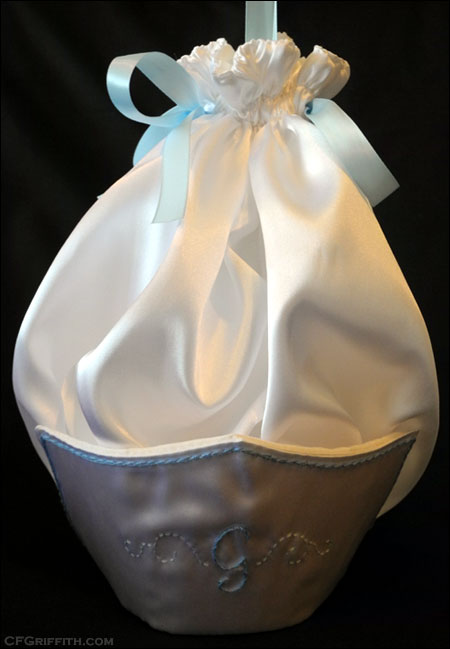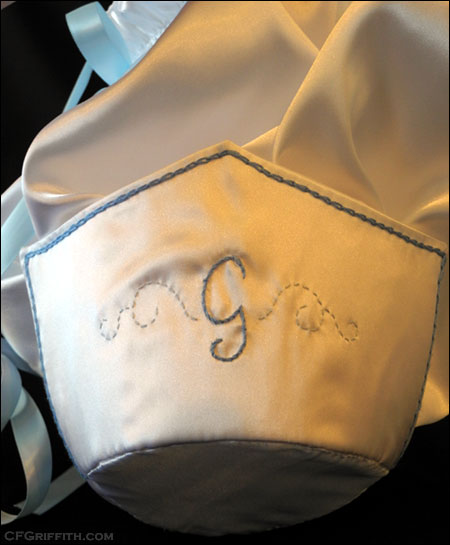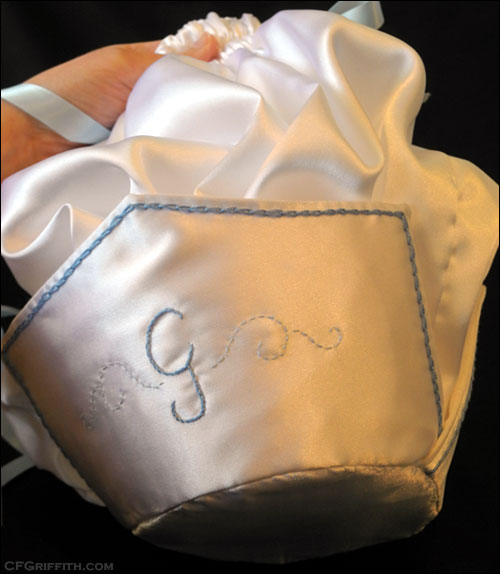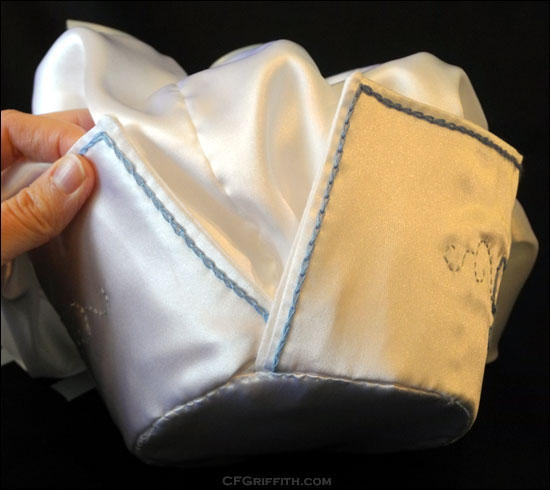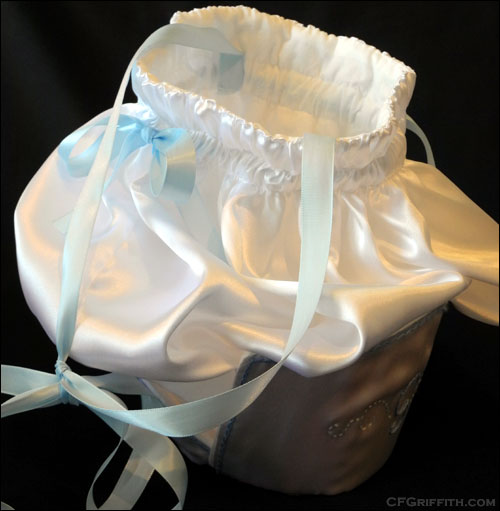Patterns Used:
– Inspiration from: this fashion plate, this Metropolitan Museum of Art purse, and this LACMA work bag.
– Construction inspiration from Costume Close-up, by Linda Baumgarten (Man’s Cap, page 115).
Fabrics Used:
– White satin.
– White cotton for lining.
– Heavier and sturdier, but thin fabric I’ve used for various other projects (it’s been so long, I can’t remember what exactly it is).
Other Materials Used:
– Heavier cardboard (a USPS mailer box).
– Lighter cardboard (two layers from one of those file folders — next time, I’ll try a light poster board).
– Blue ribbon from Joann Fabrics.
– White thread.
– DMC cotton embroidery floss.
A mixture of machine and hand sewing.
This project is actually a re-make. I had originally finished the bag for the Costumer’s Lost Weekend retreat so I could have something to put my room key and a few other light items in. I messed up and hated the result.
Before the recent 4th annual Georgian Picnic, I decided to take it apart and try again.
The embroidery is very basic, because I didn’t want to spend a lot of time on something detailed when I wasn’t even sure if it would work.
The original had only fabric reinforcement, but the new version has a cardboard bottom that also has the sturdier fabric to help stiffen the base. The side cuffs are reinforced with the lighter cardboard.
The lining is the part that is actually doing the work holding items. That is what everything else is connected to.
The lining is slightly shorter than the outer fabric, and is narrower. I used the same circle shape to create the base of the lining that I used for the outer section.
The outer satin part is gathered at the top to fit the lining. Even when it’s open, it still has a gathered look to it.
The bottom of the outer satin part is also gathered, and it is attached to the inside seam allowance of the “basket” section.
For the “basket” section, each cuff was sewn separately (embroidered first), and then I created a pocket for the light cardboard to slide into between the outer satin part and the back lining part. The cardboard was cut short along the bottom edges so the cuffs could be sewn to the round base.
The bottom of the base has many layers, and the outer satin base was stitched on last to cover up the interior.
I almost made another mistake when I was close to finishing this version, and had to remove both layers of the bag to make some changes. This ruined some of the stitching I had done for the base (I had poked holes in the cardboard and tacked it to the innermost layer of base fabrics). I’m not sure how sturdy this will be over time, or if the lower “basket” will eventually fall off. Since the lining is the main part holding everything together, I have a feeling it should work well enough.
The outer satin part is lightly tacked in places to the cuff to help keep it from twisting or moving too much.
On the upper side, there is one false bow tacked on, and the other side is the actual drawstring ribbons tied into a bow. In order to open the bag, you untie the bow, and tie it back when you close it. The handle is two more ribbons, tied into a bow in the middle. These are tacked along the two seams creating the drawstring channel.
This bag wasn’t based off any one design. I was intrigued when I came across an actual 18th century item, and a fashion plate. I just pieced a design together to try this out. Obviously there are things I might do differently next time, but it was a neat experiment and frustratingly fun to try to figure out without any other details or construction tips.
Unfortunately, I forgot to take photos of me holding this bag while wearing my chemise a la reine. Here are a few detail photos until I get some other ones. It was a little difficult to get decent photos without help. The bag “deflates” a little when it’s just sitting and empty.
Photos:
